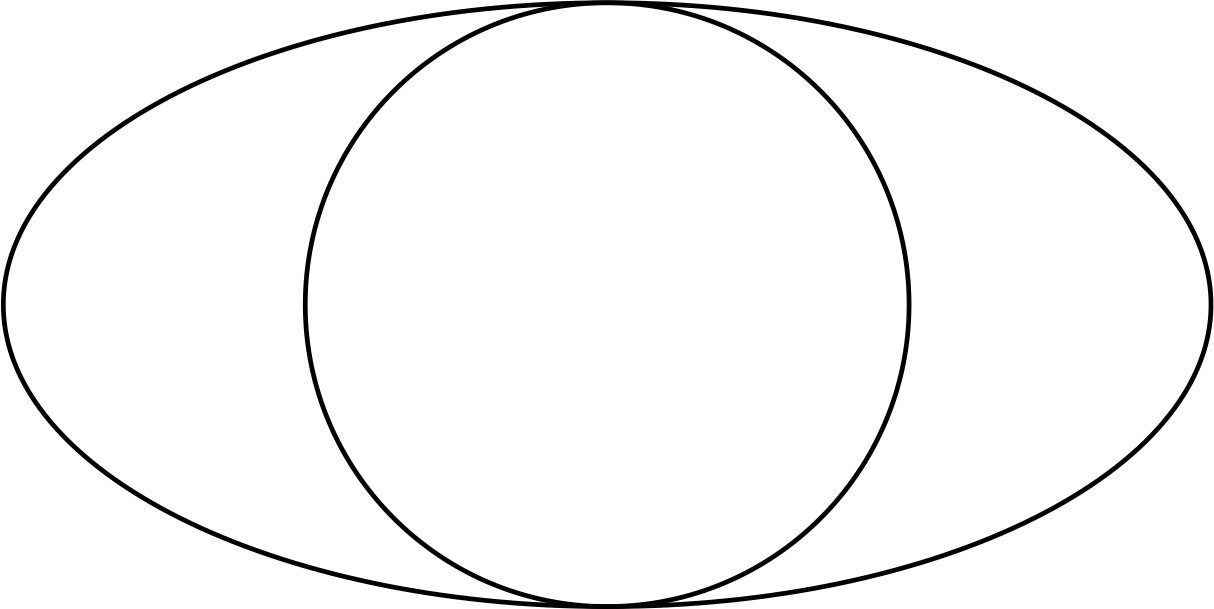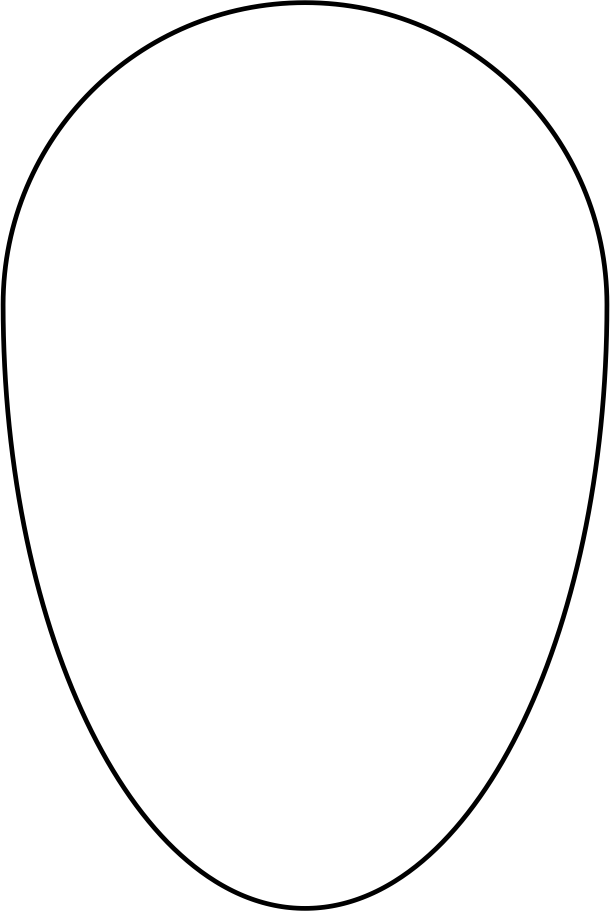- Title: Contemplations, The Visionary Artistic Eye Perspective.
- Author: Arvindus.
- Publisher: Arvindus.
- Copyright: Arvindus, 2017, all rights reserved.
- Index: 201708081.
- Edition: html, first edition.
§
In 'The Artistic Eye Perspective' a more captivating and authentic composition and bordering of two-dimensional visual artworks was presented.1 These composition and bordering were based upon the natural view of the physical eyes. The two eyes give two horizontal oval unsharp views which in their overlap result into a circular sharp view at the center. This is depicted in figure 1.

Figure 1.
Above the eyes were mentioned as being physical and the views they deliver were mentioned as being horizontal. This is of importance. That the eyes spoken of are physical means that they deliver views of the physical plane. Now in earlier contemplations it was brought to the fore that in symbolism horizontal lines symbolize differentiations within one specific plane while vertical lines symbolize differentiations of different planes themselves.2, 3 So when the physical plane is considered as a plane of symbolism wherein archetypes are symbolized (the Platonist thought) may the horizontality of the view of the physical eyes be considered as symbolizing what it delivers in reality; a view of differentiations on the one and the same physical plane.
So far the two physical eyes were discussed here. However the ageless wisdom makes mention also of a third (non-physical) eye.4 This third eye is latent in average man but develops along with his spiritual development. And this third eye when developed then delivers views on more archetypal planes. This third eye is thought to be placed between the eyebrows.5 Interesting here to mention is that often in Hinduist images of gods, as for instance Shiva, this third eye is between the eyebrows and vertically depicted.
Now that spiritually advanced man may develop the third eye and with that a vision of realms higher than the physical means that spiritually advanced artists may develop the same. A spiritually advanced artist, a visionary artist, may visualize his views in higher realms in physical two-dimensional art. But since the visualized image then is a physical translation or symbolization of what is seen on a higher and different plane a composition as in figure 2 is more authentic to use.
In that figure the border of the artwork is shaped oval in the view range of one human eye. The oval is placed vertically because in visionary views sceneries are seen of realms different from the physical, in which the view is visualized. Also is the heart of the form placed in the upper part. This is because the third eye grants a view into higher realms, not lower ones. (Interesting here to mention is that when a cross is placed in this form with its center at the heart of the form the result will be the cross of Christ. When the oval shape would be turned around with the heart at the bottom the cross of the antichrist would be resultant). Also does this visionary view not know any fading edges, as was the case with the non-visionary artistic eye perspective. In the composition of the visionary artistic eye perspective everything within the borders is treated as subject and nothing as context.

Figure 2.
It may reasonably be objected that the third eye may not at all resemble the shape of a physical eye. However the third eye is also called 'eye', while in reality it may be a totally different sense. Thus we are here connecting to the eye symbol as it is used in the ageless wisdom. This of course makes this contemplation extrapolating and thus suggestive. But in the end the visionary artist shall know very well himself how to shape and visualize his artwork.
Notes
- 'Contemplations, The Artistic Eye Perspective', Index: 201708061.
- 'Contemplations, 'Sister' and 'Brother'', Index: 201502241.
- 'Contemplations, The Cross in the Circle: Consciousness and Duality', Index: 201510131.
- Alice A. Bailey, The Light of the Soul, in: Twenty-Four Books of Esoteric Philosophy, (CD-ROM, Release 3), Lucis Trust, London / New York, 2001, p. 413. "The third eye simultaneously develops and admits its possessor into the secrets of the subtler realms in the three worlds, […]."
- Alice A. Bailey, A Treatise on White Magic, in: Twenty-Four Books of Esoteric Philosophy, (CD-ROM, Release 3), Lucis Trust, London / New York, 2001, p. 212. "The centre between the eyebrows, commonly called the third eye has a unique and peculiar function."
Bibliography
- 'Contemplations, 'Sister' and 'Brother'', Index: 201502241.
- 'Contemplations, The Artistic Eye Perspective', Index: 201708061.
- 'Contemplations, The Cross in the Circle: Consciousness and Duality', Index: 201510131.
- Alice A. Bailey, A Treatise on White Magic, in: Twenty-Four Books of Esoteric Philosophy, (CD-ROM, Release 3), Lucis Trust, London / New York, 2001.
- Alice A. Bailey, The Light of the Soul, in: Twenty-Four Books of Esoteric Philosophy, (CD-ROM, Release 3), Lucis Trust, London / New York, 2001.